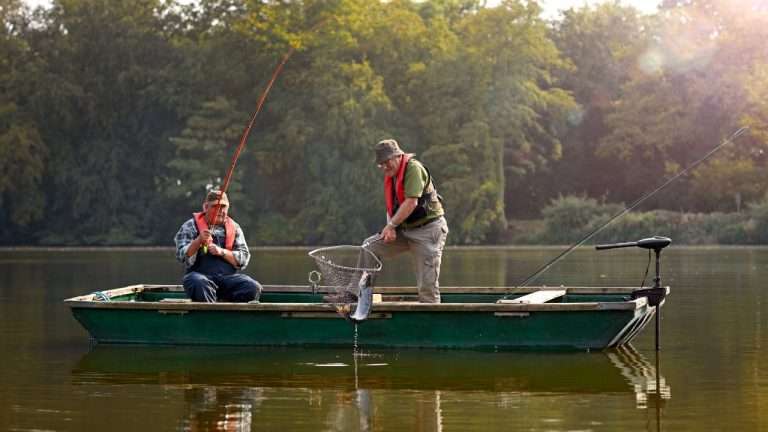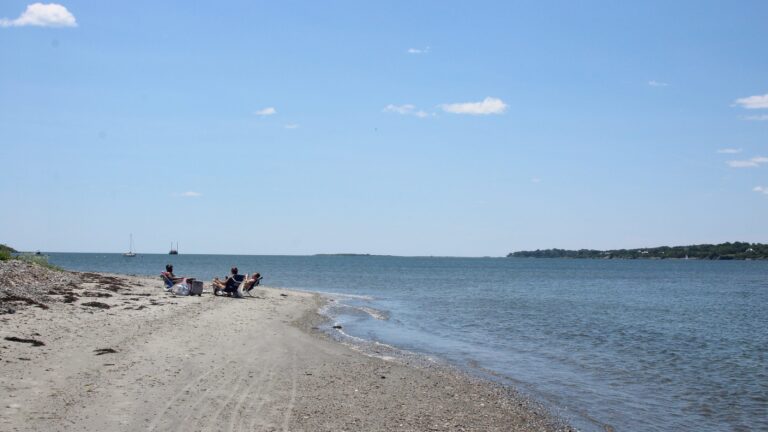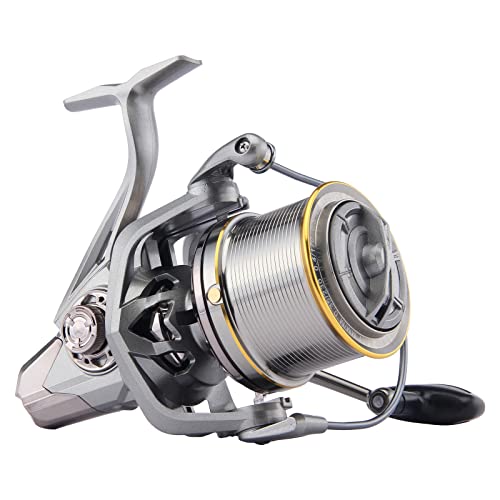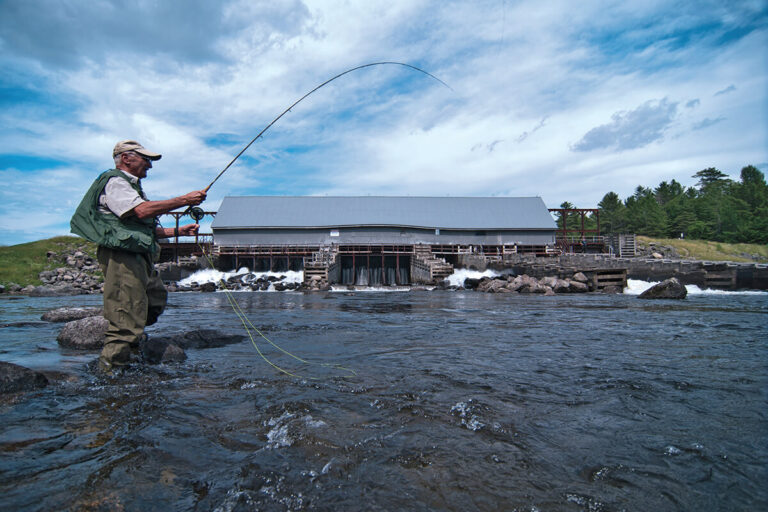For offshore fishing, wear sunscreen, a hat, sunglasses, quick-dry clothing, and non-slip shoes to stay safe and comfortable on the water. When dressing for offshore fishing, it is important to protect yourself from the sun’s rays, ensure your clothing dries quickly, and have proper footwear for a stable grip.
Wearing clothing made from materials like nylon or polyester will help to wick away sweat and keep you cool, while non-slip shoes will prevent any accidents on the slippery boat deck. Don’t forget to wear a hat and sunglasses to shield your face and eyes from the sun.
Make sure to also apply sunscreen to exposed skin to protect against harmful uv rays.
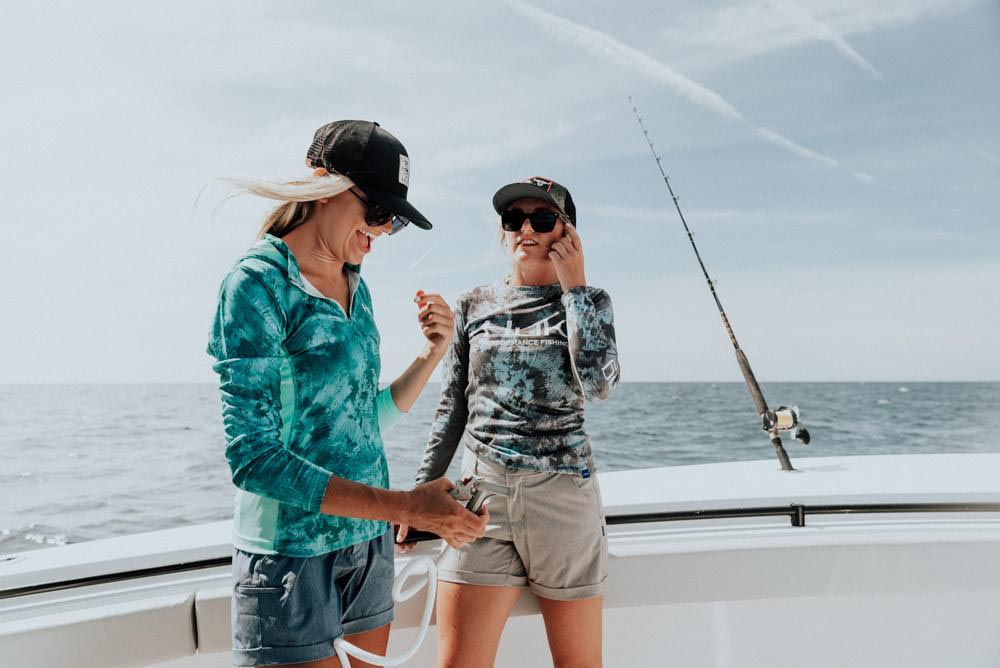
Credit: www.hukgear.com
The Importance Of Choosing The Right Clothing
Comfortable And Functional Attire For A Successful Fishing Trip
When it comes to offshore fishing, choosing the right clothing is crucial. Not only does it contribute to your comfort, but it also plays a significant role in ensuring a successful fishing trip. Here are a few key points to consider when selecting your attire:
- Protection from the elements: Offshore fishing exposes you to harsh weather conditions such as sun, wind, and rain. Opt for clothing that provides adequate protection against these elements.
- Breathability and moisture-wicking: As you engage in physically demanding activities, it’s important to stay comfortable and dry. Look for clothing made from breathable and moisture-wicking fabrics to prevent sweat buildup and potential discomfort.
- Mobility and flexibility: Fishing requires a range of movement, so choose clothing that allows for unrestricted mobility. Consider materials that offer stretch and flexibility, enabling you to cast and reel with ease.
- Layering options: The weather conditions can change rapidly offshore, so it’s wise to opt for clothing that allows for layering. This way, you can adjust your clothing based on temperature fluctuations throughout the day.
- Quick-drying properties: Offshore fishing often involves getting wet, whether it’s from splashes or rain. Select clothing that dries quickly to avoid prolonged discomfort caused by dampness.
- Sun protection: Spending extended periods under the sun puts you at risk of sunburn and other harmful effects. Choose clothing that provides built-in sun protection, such as upf-rated shirts and hats.
Protection Against Harsh Weather Conditions
Offshore fishing can test your resilience, as the weather conditions can be unforgiving. Here’s why choosing the right clothing is essential for protecting yourself against these harsh elements:
- Sun protection: Prolonged exposure to the sun can lead to sunburn, skin damage, and even skin cancer. Wearing upf-rated clothing and wide-brimmed hats can help shield you from harmful uv rays.
- Wind resistance: Offshore winds can be strong and gusty, making it important to wear clothing that provides wind resistance. Windproof jackets and pants can help block the chilling effects of the wind.
- Rain repellency: Sudden rain showers are common when fishing offshore. Opt for waterproof or water-resistant clothing to keep you dry during downpours.
- Insulation: Offshore waters can be colder than expected, especially during early mornings or in certain locations. Dressing in layers with thermal undergarments or fleece jackets can provide insulation and keep you warm.
- Footwear: Don’t overlook the importance of appropriate footwear. Sturdy, non-slip shoes or boots with good traction are crucial for maintaining stability on the boat and preventing accidents.
Ensuring Safety On The Boat
Aside from comfort and protection, choosing the right clothing also plays a significant role in ensuring your safety while offshore fishing. Here are some key points to consider:
- Bright colors: Wearing bright-colored clothing can help increase visibility and make it easier for others to spot you in case of emergencies or accidents. Avoid wearing dark or camouflaged attire that may blend in with the surroundings.
- Life jacket compatibility: If you’ll be wearing a life jacket while fishing, make sure your clothing allows for a proper fit and doesn’t hinder your movement. Avoid bulky or loose garments that may interfere with the life jacket’s effectiveness.
- Non-restrictive clothing: Opt for clothing that doesn’t restrict your movement or hinder your ability to react quickly. Fishing involves physical exertion, so choose attire that allows you to bend, twist, and cast without limitations.
- Avoid loose accessories: Loose accessories such as scarves, long necklaces, or dangling earrings can pose a hazard when fishing. They may get caught in equipment or cause entanglement issues. Keep accessories minimal or choose ones that won’t interfere with your safety.
- Proper footwear: Wearing appropriate footwear not only ensures stability but also protects against sharp objects or slippery surfaces on the boat. Non-slip shoes or deck shoes with good grip are recommended.
Choosing the right clothing for offshore fishing is an essential part of ensuring your comfort, protection, and safety. By considering factors such as weather conditions, functionality, and safety requirements, you can enjoy a successful and enjoyable fishing trip.
Key Clothing And Accessories For Offshore Fishing
Offshore fishing is an exhilarating and adventurous activity that requires proper clothing and accessories to ensure a comfortable and safe experience. Whether you’re a seasoned angler or a novice, having the right gear can make a world of difference. In this section, we’ll explore the key clothing and accessories you should consider for your offshore fishing trip.
Moisture-Wicking And Quick-Drying Shirts And Pants
- Opt for moisture-wicking shirts and pants made from synthetic materials such as polyester or nylon. These fabrics are designed to pull moisture away from your skin, keeping you dry and comfortable throughout the day.
- Look for shirts and pants with quick-drying properties. This feature allows any sweat or water splashes to evaporate quickly, preventing any discomfort caused by damp clothing.
- Consider shirts with breathable mesh panels or ventilation features to enhance airflow and keep you cool in warm weather.
Layering Options For Temperature Regulation
- Dressing in layers is key to staying comfortable during offshore fishing trips, as the weather conditions can change unexpectedly. Layering allows you to adjust your clothing to suit the temperature.
- Begin with a moisture-wicking base layer that sits directly against your skin. This layer helps regulate body temperature and keeps you dry by wicking away sweat.
- Add a insulating mid-layer made of fleece or wool to provide warmth if the weather cools down.
- Top it off with a waterproof and windproof outer layer, such as a breathable rain jacket, to protect you from the elements.
Sun Protection Essentials: Hats, Sunglasses, And Sunscreen
- It’s crucial to protect yourself from the strong sun while out at sea. Wearing a wide-brimmed hat helps shield your face, neck, and ears from the sun’s harmful rays.
- Invest in polarized sunglasses that offer uv protection. They not only safeguard your eyes but also reduce glare, which is particularly helpful when surrounded by water.
- Don’t forget to apply sunscreen with a high spf to any exposed skin. Reapply regularly, especially after being in the water, to ensure continuous protection.
Non-Slip And Waterproof Footwear
- Offshore fishing requires sturdy and reliable footwear. Look for non-slip shoes or boots with good traction to prevent accidents on wet or slippery surfaces.
- Choose footwear that is waterproof or water-resistant, as you’re likely to encounter splashes and potentially wet conditions during your fishing trip. Keeping your feet dry is essential for comfort and to avoid blisters or other foot-related issues.
Quality Rain Gear For Unexpected Weather Changes
- Regardless of the forecast, it’s always wise to pack quality rain gear when going offshore fishing. Weather conditions can change rapidly, and being prepared will ensure you can continue fishing uninterrupted.
- Look for jackets and pants made from waterproof and breathable materials. This combination will keep you dry without causing discomfort from trapped moisture.
- Consider features such as adjustable hoods and cuffs to provide extra protection and customization.
Now that you know the key clothing and accessories for offshore fishing, you can gear up appropriately for your next adventure on the open waters. Stay comfortable, protected, and ready to reel in some incredible catches!
Outfitting Yourself With The Right Fishing Gear
Choosing The Right Fishing Hat And/Or Visor
When heading offshore for an exciting day of fishing, it’s important to protect your head and face from the harsh sun. Here are some key points to consider when choosing the right fishing hat and/or visor:
- Opt for a hat with wide brims to shield your face and neck from the sun. This will help prevent sunburns and long-term skin damage.
- Look for hats made from breathable materials, such as cotton or nylon, to keep your head cool and comfortable throughout the day.
- Consider hats with built-in upf (ultraviolet protection factor) to offer additional sun protection.
- Adjustable hats or visors are great choices as they allow you to customize the fit to your preference.
- Don’t forget to choose a hat or visor in a color that won’t reflect sunlight, as this can potentially scare away fish.
Essential Accessories: Fishing Gloves, Buffs, And Neck Gaiters
Fishing accessories play a vital role in enhancing your offshore fishing experience. Here’s what you need to know about fishing gloves, buffs, and neck gaiters:
- Fishing gloves are essential to protect your hands from cuts, blisters, and sunburn. Look for gloves that are lightweight, breathable, and offer good dexterity for easy handling of fishing gear.
- Buffs, also known as neck gaiters, serve multiple purposes. They offer protection from the sun, wind, and insects while keeping you cool and comfortable. Additionally, buffs can be used to wipe sweat, block out glare, or even act as face masks.
- When choosing buffs and neck gaiters, opt for ones made from moisture-wicking and quick-drying materials to combat sweat and keep you feeling fresh.
- Some buffs and neck gaiters also come with upf ratings to provide added sun protection, making them versatile accessories for any offshore fishing trip.
Selecting The Appropriate Life Jacket
Safety should always be a top priority when participating in offshore fishing. Here’s what you need to consider when selecting a life jacket:
- Choose a life jacket that fits you properly and is approved by the coast guard. It’s crucial to try it on before heading out to ensure a snug and secure fit.
- Look for life jackets with adjustable straps and buckles to customize the fit according to your body shape.
- Consider life jackets with additional features such as multiple pockets for storing small items like fishing hooks and lures.
- Ensure that the life jacket you choose is designed specifically for offshore activities and is suitable for the conditions you’ll be fishing in.
The Importance Of Wearing Polarized Sunglasses
Wearing polarized sunglasses is not just a fashion statement but a practical necessity when offshore fishing. Here’s why:
- Polarized sunglasses significantly reduce glare from the water’s surface, allowing you to see beneath the surface and spot fish more easily.
- These sunglasses enhance visibility and clarity by reducing eye strain caused by intense sunlight, providing a more enjoyable fishing experience.
- Polarized lenses also offer uv protection, shielding your eyes from harmful sun rays that can cause long-term damage.
- When selecting sunglasses, opt for ones with sturdy frames and lenses that are scratch-resistant and impact-resistant, ensuring durability and longevity.
Must-Have Fishing Tackle And Tool Belt
Having the right fishing tackle and a convenient tool belt can make a world of difference when offshore fishing. Here’s what you should consider:
- Choose a tackle box that is durable, waterproof, and has plenty of compartments to organize your fishing gear efficiently.
- Stock up on a variety of fishing tackle, such as different sizes and types of hooks, sinkers, swivels, and lures, to ensure you’re prepared for various fishing situations.
- A tool belt is a handy accessory that keeps your fishing tools, like pliers, line cutters, and hook removers, easily accessible.
- Look for tool belts with adjustable straps and secure fastenings to ensure a comfortable and secure fit while moving around on the boat.
With the right fishing gear, accessories, and clothing, you’ll be fully equipped for an exciting and successful offshore fishing adventure. Remember to prioritize your safety and comfort, and enjoy the thrill of reeling in those big catches!
Conclusion
Dressing appropriately for offshore fishing is crucial for your comfort and safety. Remember to prioritize protection from the sun by wearing lightweight, long-sleeved shirts, wide-brimmed hats, and sunscreen. Opt for quick-drying bottoms and non-slip footwear to ensure stability on the boat.
Layering is key, so bring along a waterproof jacket or windbreaker in case of unexpected weather changes. Don’t forget to wear polarized sunglasses to reduce glare and protect your eyes. Choosing the right attire not only enhances your fishing experience but also shows respect for the marine environment.
By following these guidelines, you’ll be prepared for any fishing adventure and able to make the most out of your time on the water. So, pack your fishing gear, dress accordingly, and enjoy your offshore fishing experience to the fullest!

